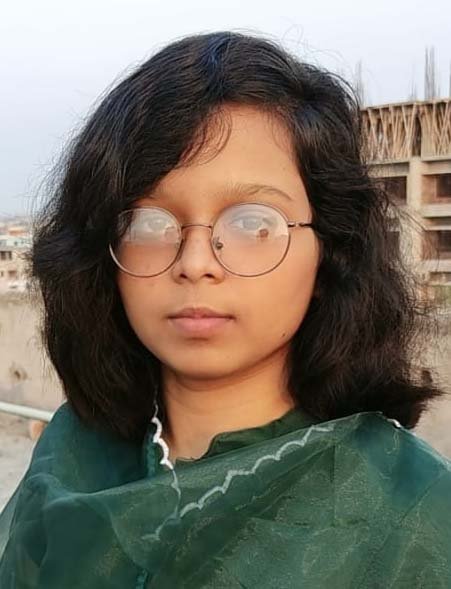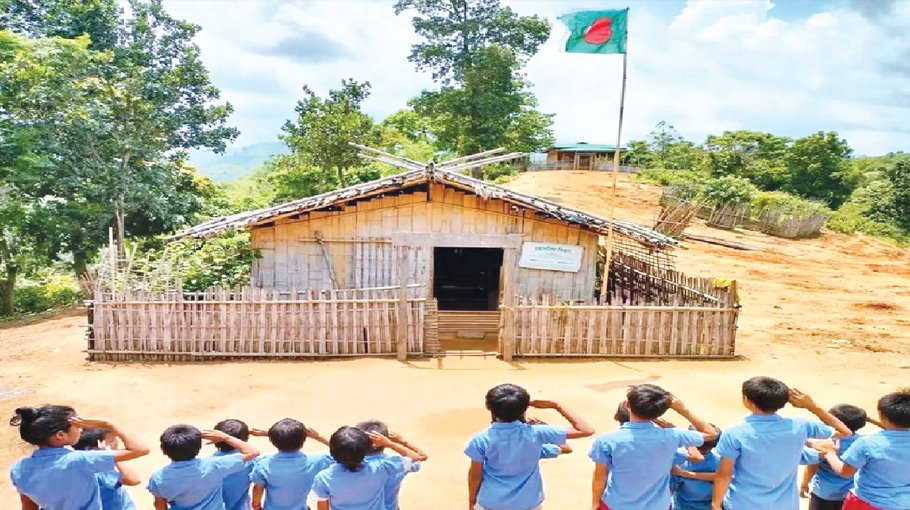Indigenous people’s edn
Facility a far cry

The Chattogram Hill Tracts (CHT) of Bangladesh are home to 11 indigenous communities, the majority of whom live in vastly isolated territories.
Unfortunately, these areas have limited access to fundamental social services like education and healthcare.
The mortality rate is high for diseases primarily treatable in comparatively developed areas.
To reach the educational institutions, students have to walk for long due to a lack of transportation and underdeveloped and uneven roads that are very difficult to cross.
According to Bangladesh Bureau of Educational and Information Statistics (BANBEIS), the dropout rate was 59 percent in the CHT, whereas the national rate stood at 19.2 percent in 2016.
Children cannot reach schools because of poverty, inaccessible and distance.
Many suffer from illness such as malnutrition typhoid and diarrhoea, or face a shortage of supplies and textbooks.
However, the government is firmly committed to expand education in CHT region.
Therefore, the government is working to provide education facilities to hard-to-reach areasthrough setting up educational institutions for building a happy andprosperous country.
Despite a number of challenges, Bangladesh has someremarkable and praiseworthy achievements in the education sector.
Besides, the local administration is also trying to improve the standard of education at the secondary level.
In this regard, all concerned will have to beef up their efforts to assist the government in improving the hill people’s living standards.
The three hill districts account for 10% of the country’s total area and 1% of the total population.
The development works should be expanded to remote areas,where women are the most vulnerable group.
Moreover, projects should be undertaken to address climate change, deforestation, and loss of soil erosion and water scarcity.
On climate change, about 44% of the total forest area of the country is located in the CHT, but currently, due to deforestation, climate change and various other reasons, a large part of the hilly area has become deforested.
Among the 64 districts of Bangladesh, Bandarban ranks second, Rangamati fourth and Khagrachari seventh among the most vulnerable districts to climate change.
Now it is necessary to take up projects to construct residential hostels at union and upazila levels, arrange adequate scholarships for higher degrees in the country and abroad, and set up multimedia classrooms everywhere.
Moreover, to turn the CHT youths into skilled manpower, various training including nursing, mobile servicing, hotel management, tourist guide management, driving and repairing can be arranged simultaneously, preferring not to be named a group of indigenous preferring not to be named told this correspondent.
The government has made many improvements in the communication-system by constructing and repairing roads, bridges, culverts to facilitate the movement of the hilly people.
The government has established various educational institutions in the hilly areas for the expansion of education.
“But, the government will have to be moresincere to flourish all types of education, including technical education, in the CHT area of the country,” an indigenous student of Shahjalal University of Science and Technology on condition of anonymity said.
Along with expanding primary, secondary and higher secondary education, the government will also have to take various steps to expand the technical education in the CHT region.
The students of the CHT districts are becoming worthy citizens of the country being self-reliant through using technical knowledge.
But, when indigenous children reach the classroom, their first experience with formal education starts with being admitted in a local primary school where most of the teachers are Bengali.
When the children read Bangla text, they can decode, but cannot comprehend.
As a result, they fall behind without a proper grasp of Bangla.
Considering the issue, the government decided to publish textbooks in ethnic languages in 2012.
And since 2017, it has been distributing textbooks in Chakma, Marma, Tripura, Sadri and Garo languages.
But, the government move has not yielded any good results due to a lack of teachers with a good command of these languages.
As per the government plan, ethnic minority students would learn exclusively in their mother tongue from pre-primary level up to class II and gradually learn Bangla from class III.
But most of the teachers can speak in the languages but they do not know how to read and write them.
According to authorities concerned, the teachers need intensive trainings on teaching using the textbooks.
The teachers, who don't have thorough knowledge on their language, still do not know how to impart lessons based on the textbooks.
Another critical concern is the absence of clear guidelines for higher education, especially in remote hilly areas where educational opportunities are scarce.
Furthermore, inadequate teaching resources lead to a lag in vital subjects like higher education, despite opportunities under the national university's honours and master's programs.
Each year, scholarships offer hope to tribal students seeking higher education, demonstrating their eagerness to learn.
Strengthening their educational foundation holds the potential for greater achievements.
Unfortunately, indigenous communities continue to grapple with basic rights due to their marginalisation, including limited access to education in their mother tongue.
Besides, social biases further impede their progress, as stereotypes and cultural insensitivity persist.
These factors, coupled with the lack of proximity to educational infrastructure, particularly affect the security of children and adolescent students in tribal areas.
In essence, systemic educational shortcomings, misinformation, and economic constraints collectively hinder many aspiring individuals from pursuing higher education.
So, the policymakers should collaboratively address the backward and underdeveloped education system, ensuring equitable participation in national development.
Financially privileged students flock to urban centers like Dhaka and Chittagong for education due to this weakness.
Reforms to the primary and secondary education system are urgently needed to ensure that government quotas for backward communities benefit all eligible students.
In a recent development at Shahjalal Science and Technology University, leaders of the Association of Indigenous Students said the students were asked about their feelings when referred to as "UPOJATI" rather than "ADIVASI."
One Chakma student, requesting anonymity, voiced a poignant perspective, likening a JATI to an unchangeable identity, unlike a tree branch or river tributary.
So a JATI cannot be a UPOJATI. The concern centered around the term "UPOJATI," with an emphasis on the significance of terminology for indigenous individuals.
Another student, hailing from the Marma community, highlighted a shift in the recognition of International Day of Indigenous Peoples in 2009.
They explained that a perception exists associating "Adivasi" with the original inhabitants of Bangladesh, leaving smaller ethnic groups like the Marma to be classified as "UPOJATI" due to misconceptions.
Remarkably, Bangladesh's constitution (section 23KA) commits to preserving and developing regional cultures and heritage of various tribes and ethnic minorities.
Curiously, the term “Adivasi” does not explicitly appear, raising questions about its usage.
AMonipuri student said that recognition as “indigenous people “' would secure enhanced rights, as outlined in the United Nations Declaration on the Rights of Indigenous Peoples (UNDRIP) from 2007.
This declaration includes entitlements such as self-determination, which the Bangladesh government seems reluctant to grant, potentially contributing to the preference for the term "indigenous people'' among smaller ethnic groups.
Despite facing obstacles, indigenous students at Shahjalal University celebrated World Indigenous Day on August 9, though the administration had suggested a September date.
Marking the day they staged various programs like cultural heritage.
Besides, the indigenousstudents expressed concernover students’ access to the admission process this year.
“We are urging the university authorities to increase indigenous student seats” another indigenous said.
“We are demanding of the university authorities to increase up to minimum of 150 seats,” he added.
The government has been working relentlessly for protecting the legitimate rights of the indigenouspeople in the country.
But, the government’s cherished goal to include the indigenous people into the mainstream society through strengthening their economic empowerment together with ensuring their legitimate rights is still a far cry due to various reasons.
Talking to Bangladesh Post one Jagaran Chakma, said most of indigenous peoples living in different places of country have been struggling acute economic hardship.
“Besides, they do not have adequate access to education, health care, food and nutritional security, safe drinking water and hygienic sanitation till date,” he added.
He said the government is doing everything for the betterment of the indigenouspeople.
“But, lack of coordination among the authorities concerned and all stakeholders, we are still lagging behind,” he added.
In this regard he said Chittagong Hill Tracts Development Board and Zila Parishad can play vital role to address these problems.



